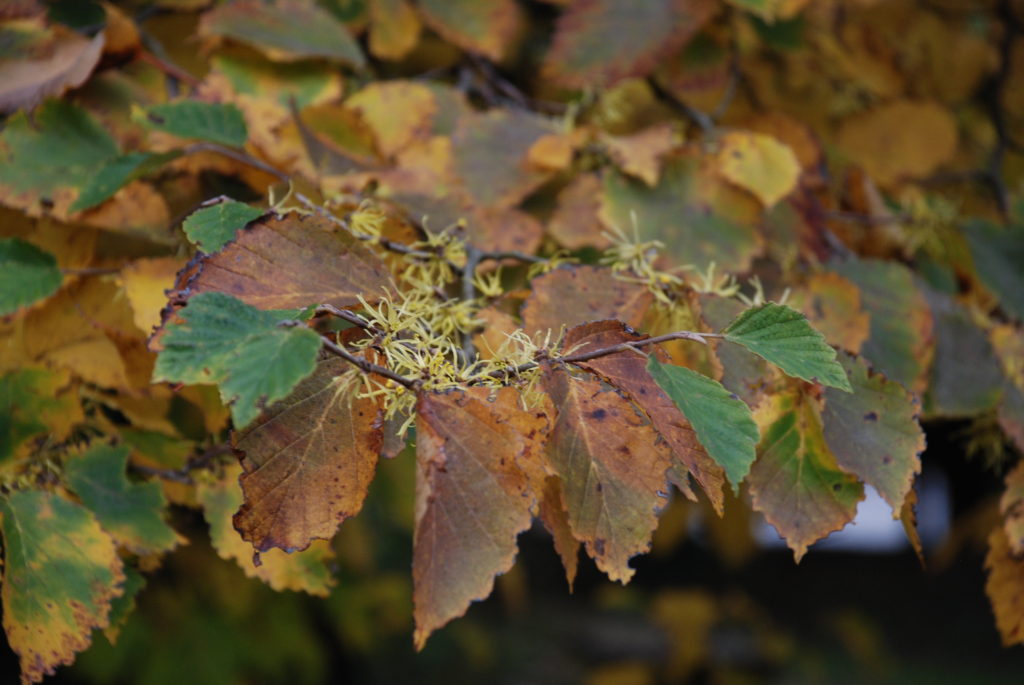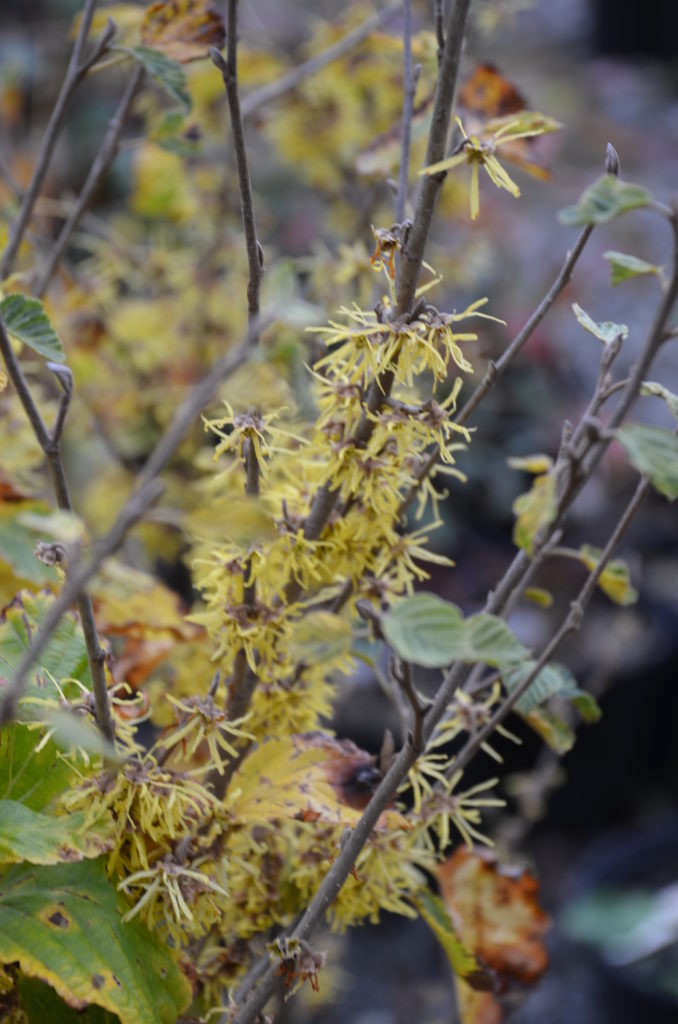
Common witchhazel (Hamamelis virginiana) is likely the last native woody shrub or tree to bloom in the northern areas of the U.S. and Canada (USDA hardiness zone 3-8). This autumn blooming deciduous shrub or tree grows in open woodlands, often near a lake or a stream bank. Common witchhazels grow 15-20 feet tall as a large shrub and 25 feet as tree form. Three cultivars are available, and are mostly sold by native plant specialty nurseries in your state or region and on-line.
Clusters of yellow ribbon-like flowers appear along multiple branches from October to December during or after leaf drop. Blooms are fragrant upclose. Medium to dark green circular (ovate-obovate) leaves turn yellow in fall. Rating of the fall leaf color varies from one year to the next. Green seed capsules form the following spring and mature to light brown in late summer.
No serious insects or diseases affect witchhazels. Insect leaf galls, caused by small wasps, may appear infrequently on foliage. Japanese beetles may chew on summer foliage causing minimal damage.
Cultivars: ‘Little Suzie’ (semi-dwarf, 4 to 5 ft. shrub); ‘Green Thumb’ (15 feet; yellow/green variegated leaves; soft yellow flowers; ‘Harvest Moon’ (18 feet high; late blooming lemon yellow (which happens after leaf fall).
Set balled and burlapped (b&b) or container-grown nursery stock in any season of the year. Witchhazels grow best in partial to full sun (minimum 6 hours sunlight) for high flower numbers.
Soil: grows in any soil that is mildly acidic; tolerates wet soggy ground.
Watering: exceptionally drought tolerant after its first year.
When to prune: prune into multi-stemmed small tree or naturally as a shrub to a desired height and width in late winter or early spring.
In the landscape: Common witchhazels are nature’s last hurrah; long-lived fall blooming native shrub or small tree; three new better cultivars improves its landscape versatility; attract wildlife; bring cut boughs indoors for decoration and floral fragrance.


 Posted in
Posted in 
